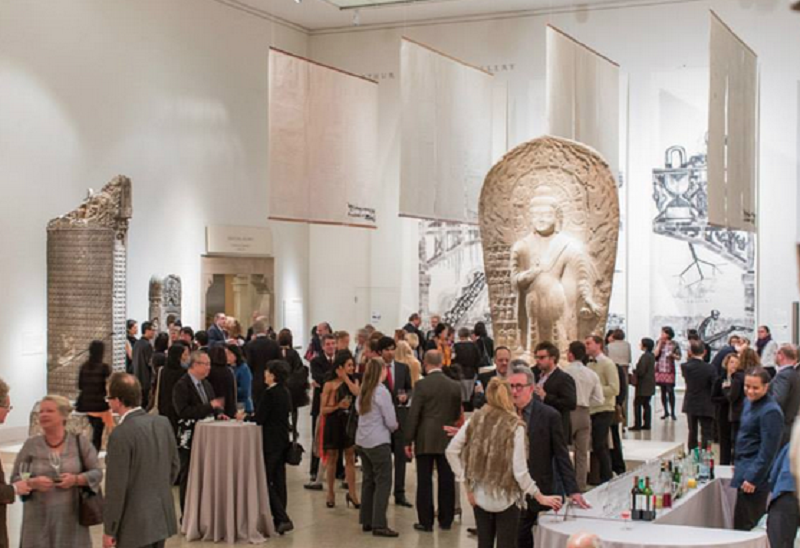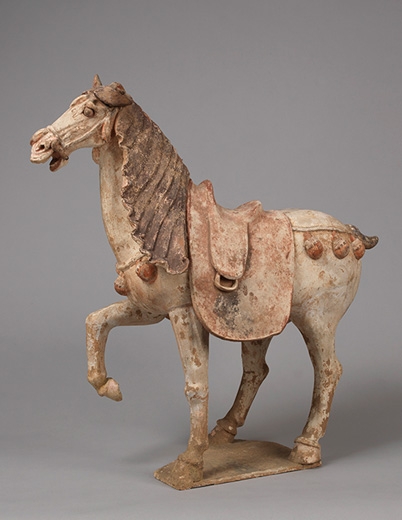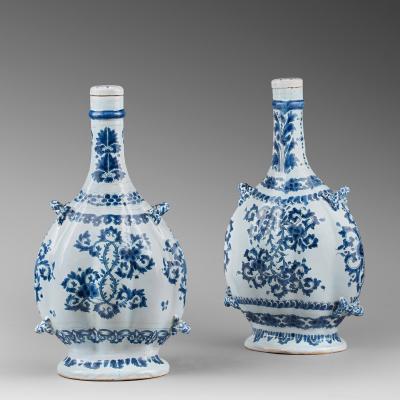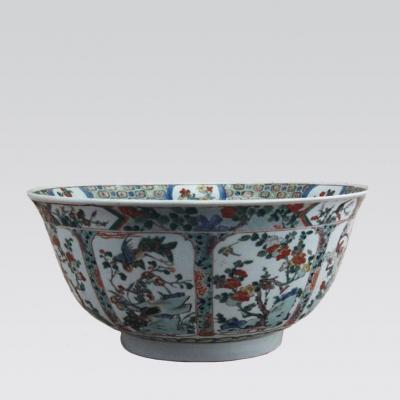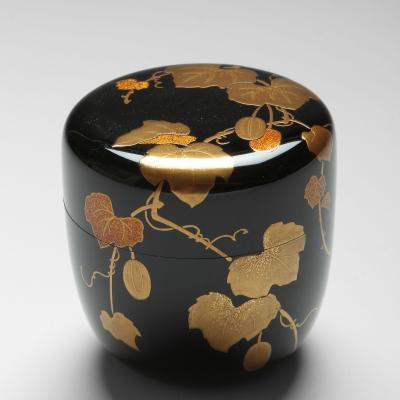A Look at Asia Week New York’s Fascinating Evolution
Asia Week New York has undergone a considerable transformation in the last twenty-plus years. Now a ten day Asian art extravaganza featuring forty-five of the city’s top Asian art specialists, five major auction houses, and sixteen museums and Asian cultural institutions, the event has seen its fair share of peaks and valleys.
Coined by Sotheby’s to commemorate their annual March Asian art auctions, in the late 1990s Asia Week grew to include an array of additional auctions and the International Asian Art Fair. Launched by Brian and Anna Haughton of Haughton International Fairs at the Park Avenue Armory, the Asian Art Fair was the crown jewel of Asia Week. New York dealer Joan Mirviss, who exhibited at the show each year, says, “That fair was the key Asian art event in the world. Curators and collectors from every continent came in and the opening night party, which benefited the Asia Society, was the event. Many said it was the most beautiful fair in the world — there was a harmony of aesthetics and there was a simplicity in the design of the fair. It was extremely elegant and extremely seductive. It was a magical occasion.”
In 2001, after the September 11 attacks, the Armory was taken over by the city and the Asian Art Fair moved to Lincoln Center. According to Mirviss, “It was the beginning of a very, very slow diminution in the quality of dealers. Changes in policy in terms of ivory and provenancial law made it more difficult for exhibitors from abroad to get items into the country and many chose not to come back for the show.” The fair forged ahead for a number of years, but in December 2008, after another economic downturn, Haughton called it off.
As soon as the news broke, Mirviss got in touch with fellow dealer Jiyoung Koo, a specialist in Korean art. “We said we’ve got to do something,” recalls Mirviss. “ So she and I mustered sixteen dealers with no notice and published a brochure. It turned out to be very successful. Instead of one central location, we had sixteen New York dealers arranged on a map and people really did come to see us.” This open house format and the week-long gallery exhibitions that followed would become the model for subsequent editions of Asia Week New York.
Over the next seven years, Asia Week continued to flourish, with more dealers from both New York and abroad signing on each year. Related happenings ranging from lectures and exhibitions to fundraisers and exclusive tours of the city’s top cultural institutions sprouted up. Partnerships with major museums such as the Rubin Museum of Art, the Japan Society, the Morgan Library & Museum, and the Solomon R. Guggenheim Museum bolstered buzz around the event and by 2014, Asia Week New York had an unprecedented forty-seven dealers on board. Mirviss says, “It has grown from that one year where we thought this is it, this is all over, to a big, incredibly vibrant and exciting event. Because it’s no longer in a public venue, but in galleries, dealers are able to bring more material than when they only had a small booth at a fair. They can put more effort into their displays because they have more than twenty-four hours to set up. People can come in and linger and have conversations and dealers can offer them supportive material — reference sources, back-up information, items for comparison. We can do a whole host of activities for a collector or a museum group that we couldn’t do before. In many senses, there is much more to see now during Asia Week than there ever was before.”
This year, collectors, curators, and Asian art enthusiasts will once again be treated to a robust schedule of gallery open houses, auctions, exhibitions, lectures and special events. Among the dealers participating in this year’s Asia Week New York are Joan Mirviss, who will present the exhibition A Palette for Genius: Japanese Water Jars for the Tea Ceremony; Koo New York, who will highlight Korean and Chinese art from a private collection; Erik Thomsen Gallery, who will present the exhibition Contemporary Lacquer by Yoshio Okada and Taisho-Era Screens, and will also be exhibiting at the Japanese Art Dealers Association of New York's special annual exhibition at the Ukrainian Institute of America; and Berwald Oriental Art, who will present Transitional Treasures, a group of extremely fine blue and white pieces from the 17th century, as well as a selection of pieces from the Tang to Qing Dynasties.
Asia Week New York will run from March 10-19, and the event’s annual, invitation-only reception will take place at The Metropolitan Museum of Art on March 14. The Met, which boasts an encyclopedic collection of Asian art, will open its Asian art galleries for viewing so that guests can partake in special curatorial tours. Mirviss says, “Our relationship with The Met took many years of work to accomplish. The Met is the king [when it comes to Asian art] and it’s alluring to any single collector from any part of the world. Conversely, we attract Asian art organizations from all over the country and it gives The Met access to high level industry leaders from areas they might not have been able to reach otherwise. It's really a win and win relationship.”
For those traveling to Asia Week from outside of New York, the posh Surrey Hotel on the Upper East Side is running an exclusive offer during the event. In addition to providing direct access to many of Asia Week New York’s dealers, museums, exhibitions, and auction houses, The Surrey will have an installation of contemporary Asian art on view. “If you’re a collector of Asian art, how could you not be at Asia Week New York?” asks Mirviss. It’s extraordinary the amount of material that is here. It's even a lovely time to be in New York!
For more information about Asia Week New York, please visit www.asiaweekny.com.















